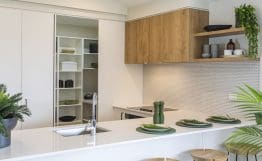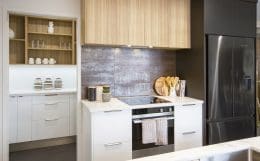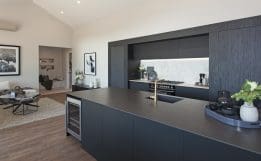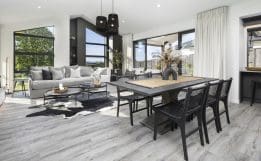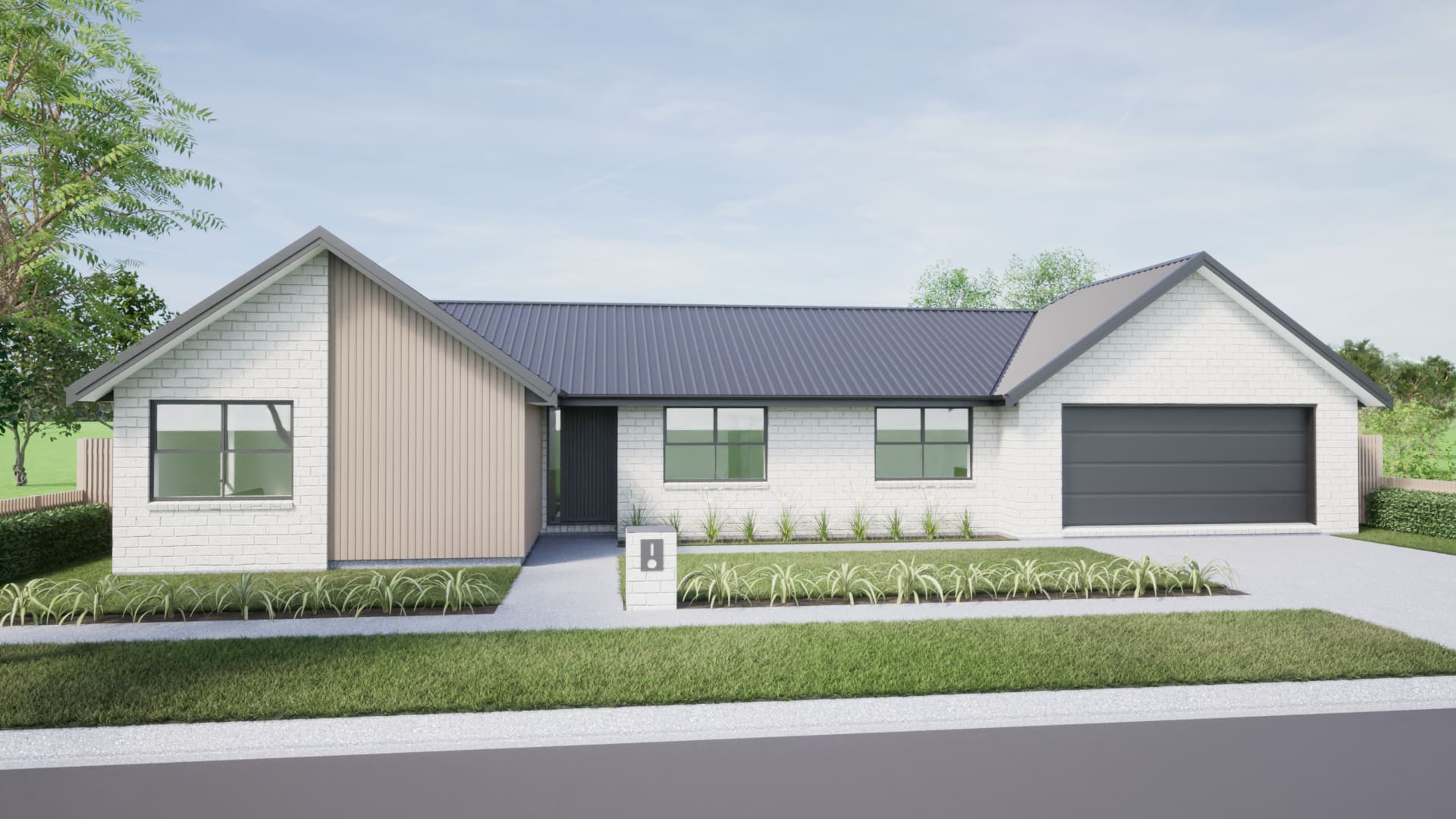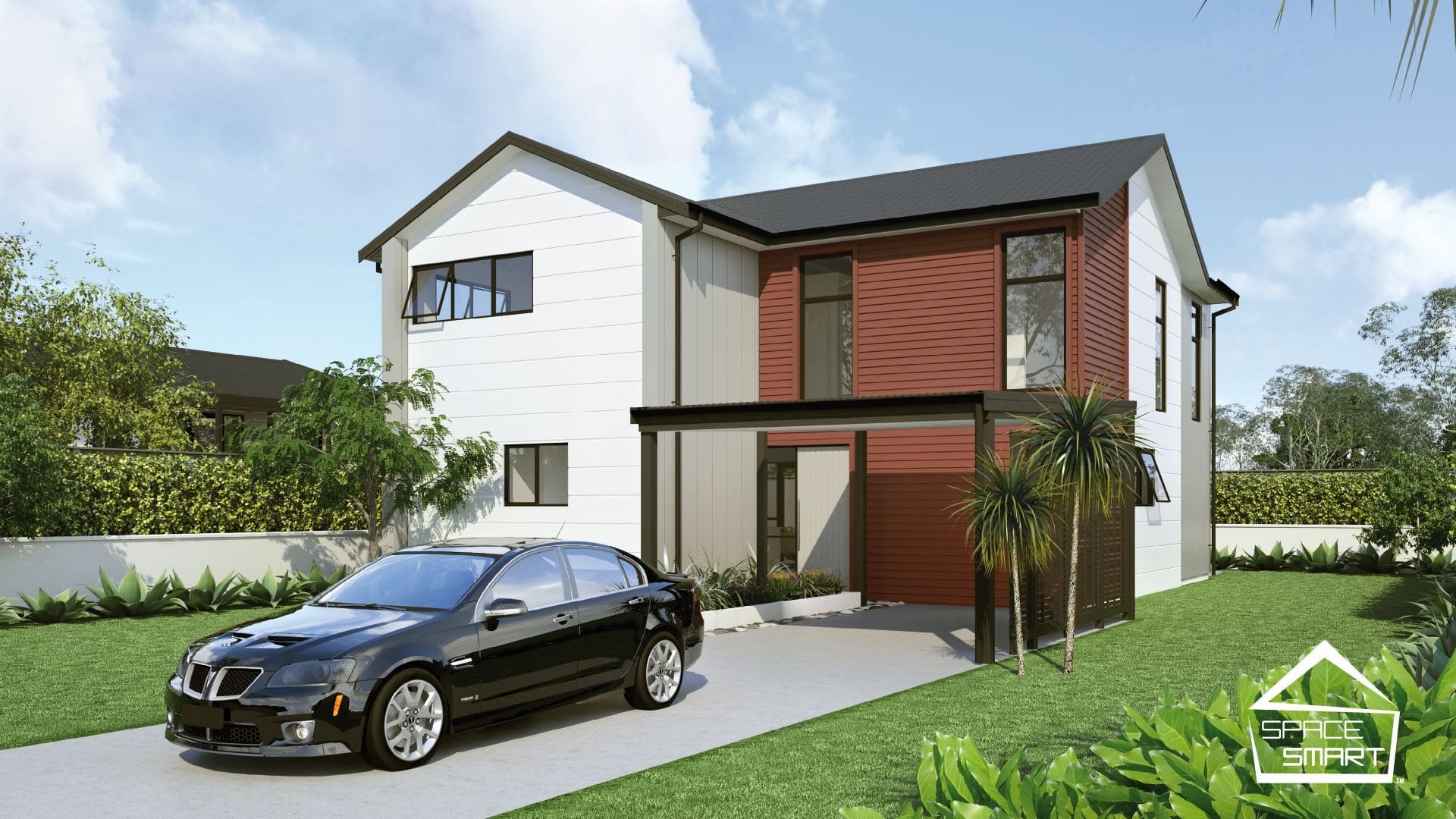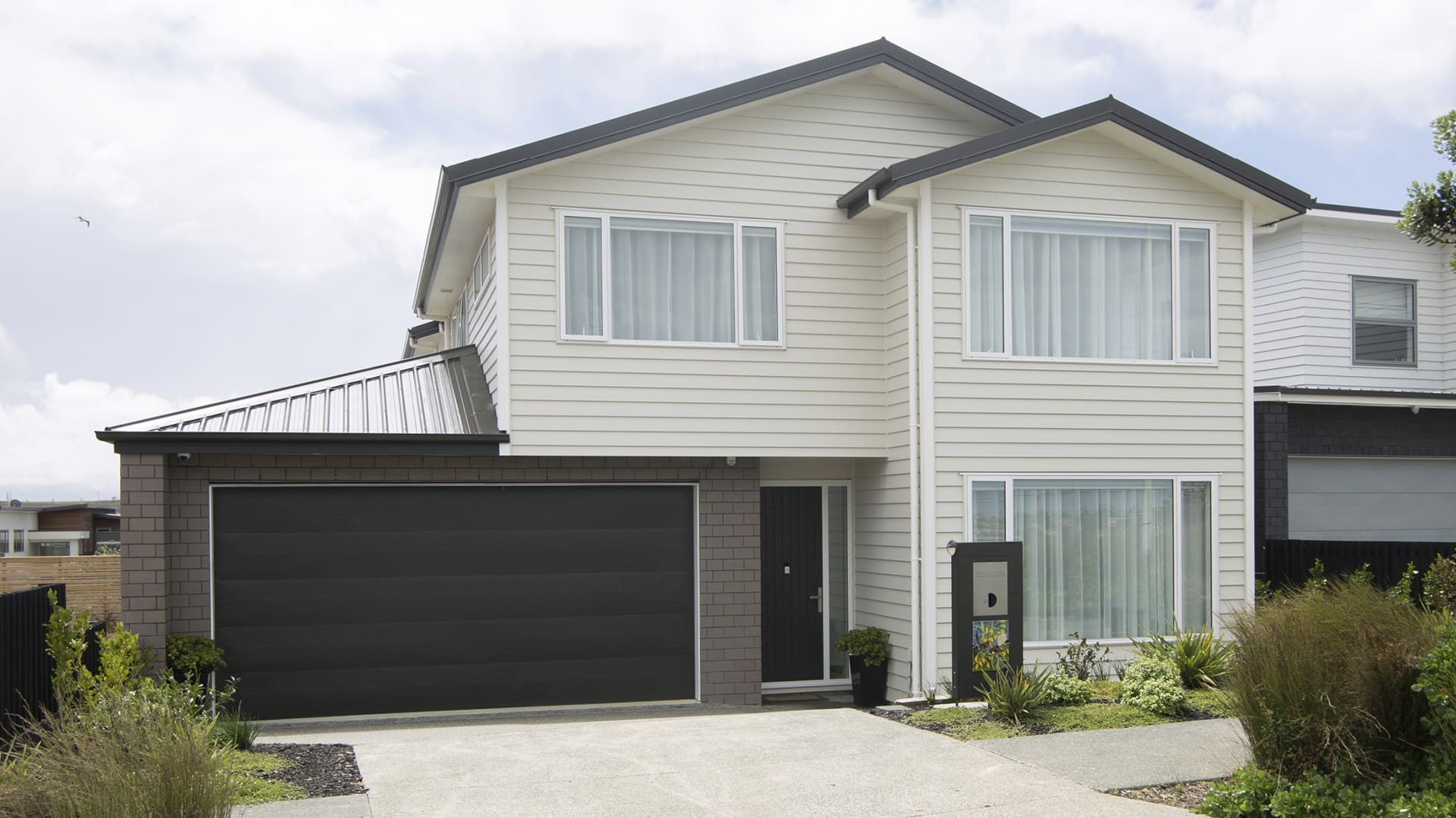Sofa So Good
A sofa isn’t just a piece of furniture, it’s the soft and supple backbone of your home. It’s where you collapse after a long day, where you binge-watch your questionable TV choices, where guests politely perch before sinking in and overstaying their welcome and where you can make cash deposits for future dairy runs without even knowing it. It’s the silent unsung hero of every living room, taking whatever life (or your pets and kids) throw at it, all while keeping up appearances and never complaining.
And whether you’re drawn to sculptural, design-forward pieces or oversized cloud-like lounges that practically beg you to take a nap, your sofa sets the tone for the entire space. Take a seat on your sofa and join us as we explore the best in sofa design, from classic leather to contemporary modulars, showcasing how different styles, textures, and colors can completely transform a room. So whether you’re after sleek sophistication or a cocoon of comfort, there’s a sofa out there waiting to support you.
So Last Mid Century
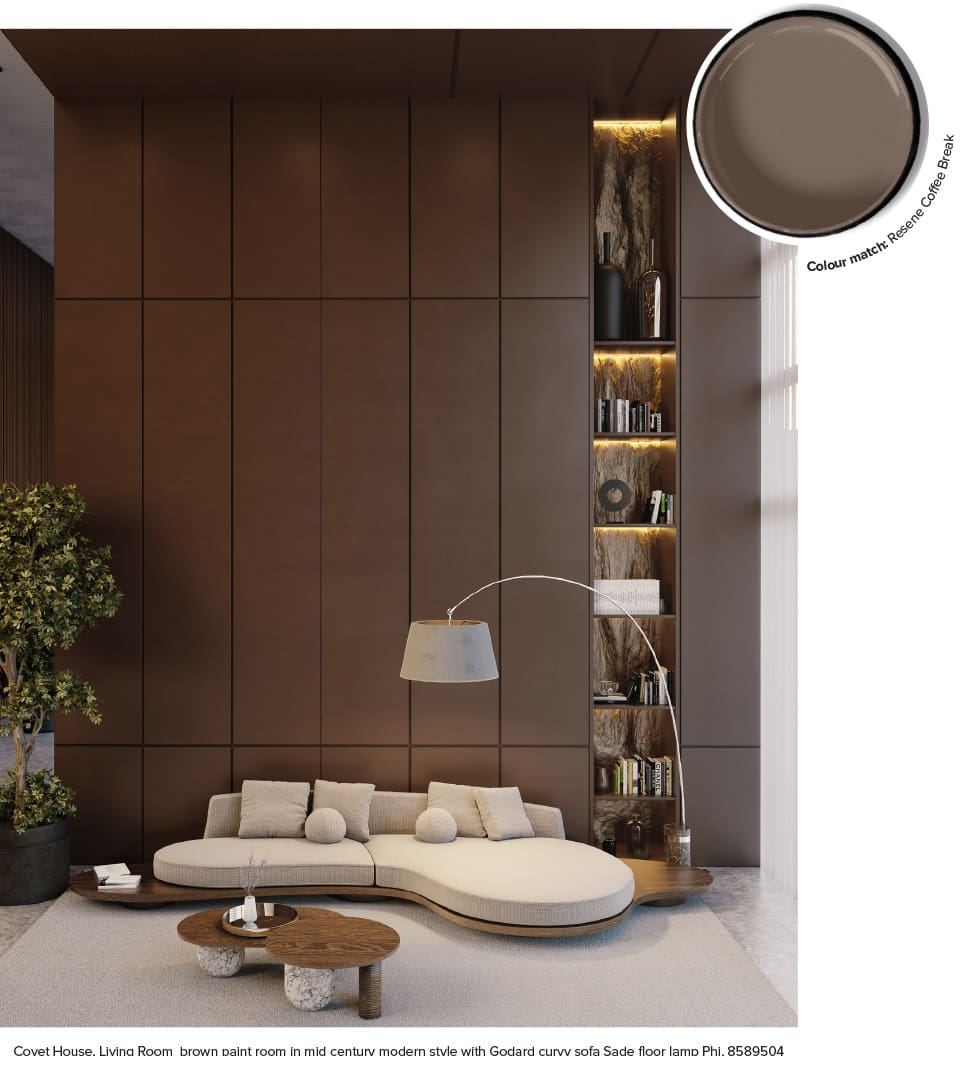
This setup nails the balance between statement and subtlety. The Godard Sofa does the heavy lifting in the room, not just because it’s big, but because its soft curves break up all the straight lines in the space. That’s a good trick to keep in mind: if your room has a lot of sharp angles (paneling, shelving, even windows), a curved sofa can add some much-needed flow and stop everything from feeling too rigid.
The color palette is another clever play. The deep brown walls bring drama and warmth, while the lighter beige sofa keeps things from getting too heavy. That’s the beauty of working with complementary tones—you get contrast, but in a way that feels natural rather than jarring. If you flip it and go for dark upholstery against lighter walls, you’ll get a bolder, more defined look. Both approaches work, but it depends on whether you want your sofa to blend in or stand out.
Texture is another thing that makes this room interesting. You’ve got smooth wood, woven fabric, soft cushions, and even that rough organic shelving backdrop. Mixing textures is key if you want to keep a neutral space from looking flat. A chunky knit throw or a velvet cushion would add even more layers without messing with the overall colour scheme.
In The Mood For a Bit of Mood
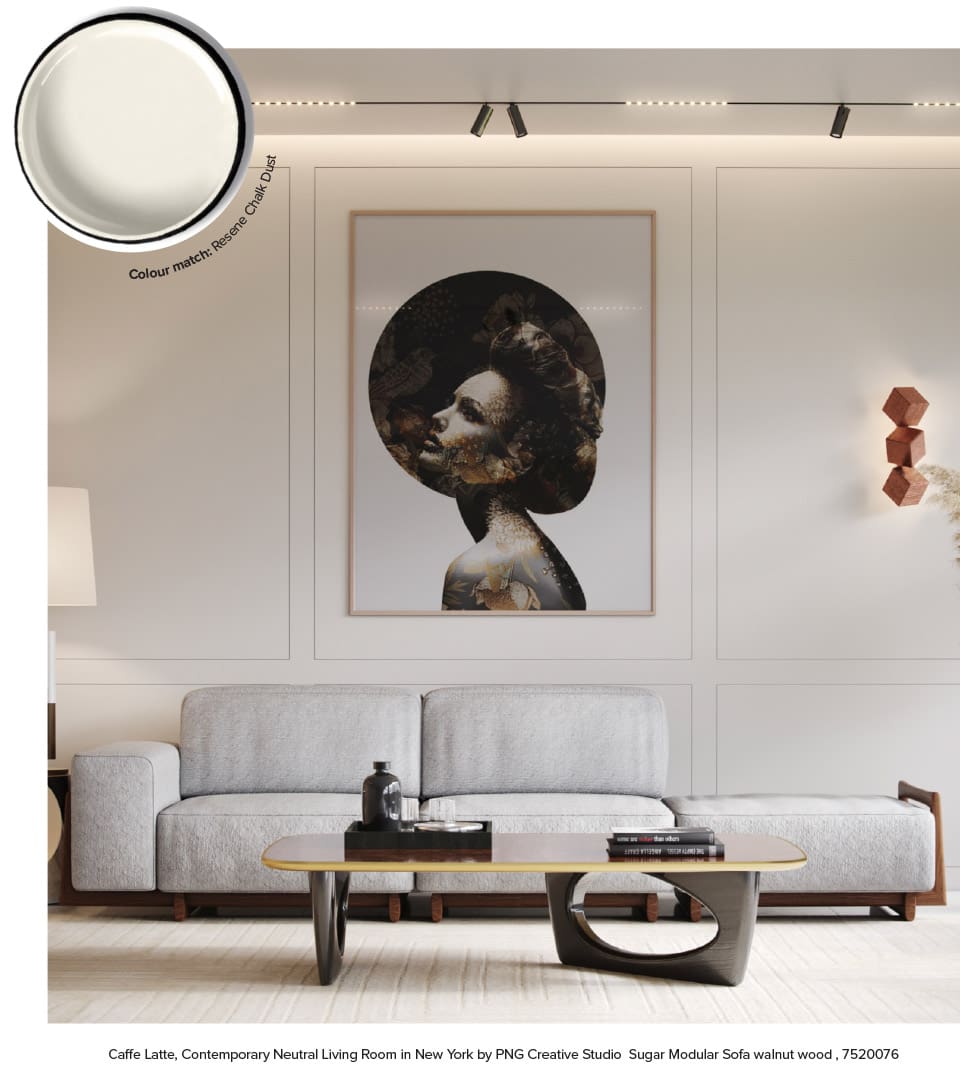
This setup is a great example of how to do modern minimalism without making it feel cold. The Sugar Modular Sofa keeps things sleek but still looks like something you’d actually want to sink into after a long day. The soft grey fabric balances nicely against the warm walnut wood details, proving that neutrals don’t have to be boring—you just need to mix up tones and textures to keep things interesting.
Speaking of contrast, the artwork above the sofa is a smart move. The deep, moody tones pop against the light walls, adding depth without overwhelming the space. If you’ve got a neutral-heavy room, a bold piece of art can keep it from feeling too safe.
Lighting plays a big role here too. The slim track lights add a modern edge, while the sculptural wall sconce and table lamp bring in some softer, more ambient lighting. Layering different types of light like this is a good way to keep a space feeling cozy rather than clinical.
If you’re looking to recreate a similar look, focus on a mix of warm and cool neutrals, choose furniture with clean lines but inviting textures, and don’t be afraid to add in a statement piece—whether it’s artwork, lighting, or even an interesting coffee table. It’s all about balance.
Mid Century, Rustic and Moderism Walk Into A Bar

This space is a blend of modern minimalism and rustic charm. The Liberty Modular Sofa anchors the room with its soft, neutral upholstery, while the warm leather armchairs bring in a mid-century feel that adds character without overpowering the simplicity of the design. The balance between the structured shapes of the furniture and the raw, exposed wooden beams makes the whole room feel both stylish and inviting.
The colour palette here is all about subtle contrast, cool greys and whites set the tone, while the rich walnut and caramel leather bring warmth. The black-and-white patterned rug adds just enough texture to break up the clean lines without making the space feel busy. This is a great example of how layering different materials like stone, wood, fabric, and leather can add depth to a minimalist interior.
If you’re drawn to this kind of look, focus on natural materials, a limited but well-thought-out colour palette, and a mix of soft and structured shapes. And don’t forget to embrace negative space sometimes, letting a design breathe is what makes it feel the most effortless.
Take A Pop Shot
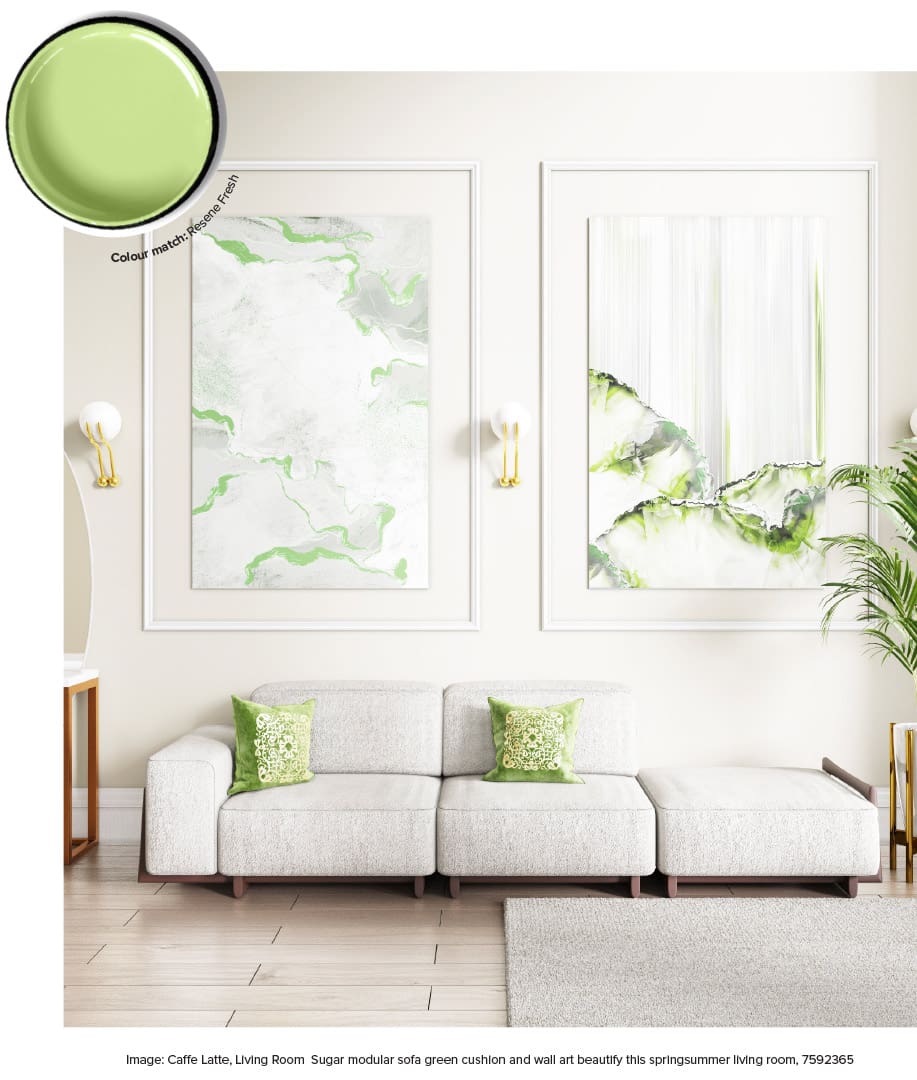
This space is a great example of how to use neutrals without letting them fall flat. The off-white Sugar Modular Sofa keeps things clean and modern, but it’s the small pops of green that really bring it to life. The throw pillows and artwork introduce just enough color to keep the space feeling fresh and not too monochrome.
This is a smart way to approach color if you like a neutral base but want to switch things up with the seasons. Swapping out pillows, artwork, or even a small rug can completely change the mood of a room without requiring a big redesign. Here, the green tones add a spring-like energy, making the space feel calm but still lively.
If you’re looking to create a similar feel, start with a solid neutral foundation like a light grey or off-white sofa and build in color through accessories. Go for a mix of textures to add depth, like a woven rug, soft fabric cushions, and glossy accents. And don’t underestimate the power of greenery it instantly makes a space feel more inviting and fresh without overwhelming the design.
Battle of the Hues

This season might be all about the naturals but that doesn’t mean that there is not still space for full on bold, rich colors, dramatic contrast, and just the right amount of glamour. This deep red sofa immediately grabs attention, but what makes it work is how it’s paired with complementary tones rather than fighting for dominance. The emerald green cushions and chair create a perfect counterbalance, reinforcing the luxurious feel without overwhelming the space.
The blush pink rug with the heron design is a smart choice, it softens the look while adding movement and a touch of artistry. Pink and red can be tricky together, but in this case, the muted tones and graphic pattern keep them from clashing. This is a good example of how mixing similar shades in different saturations can create depth rather than chaos.
If you’re drawn to bold colors but nervous about overdoing it, take a cue from this setup. Stick to a controlled palette of two or three strong shades, balance them with grounding elements like black or gold, and let texture do some of the heavy lifting. Velvet, for example, naturally enhances color depth, making rich hues look even more luxurious. Most importantly, lean into contrast, bold rooms work best when the elements are intentional rather than competing for attention.
It’s A Design Feature, Not Lack Of Maintenance
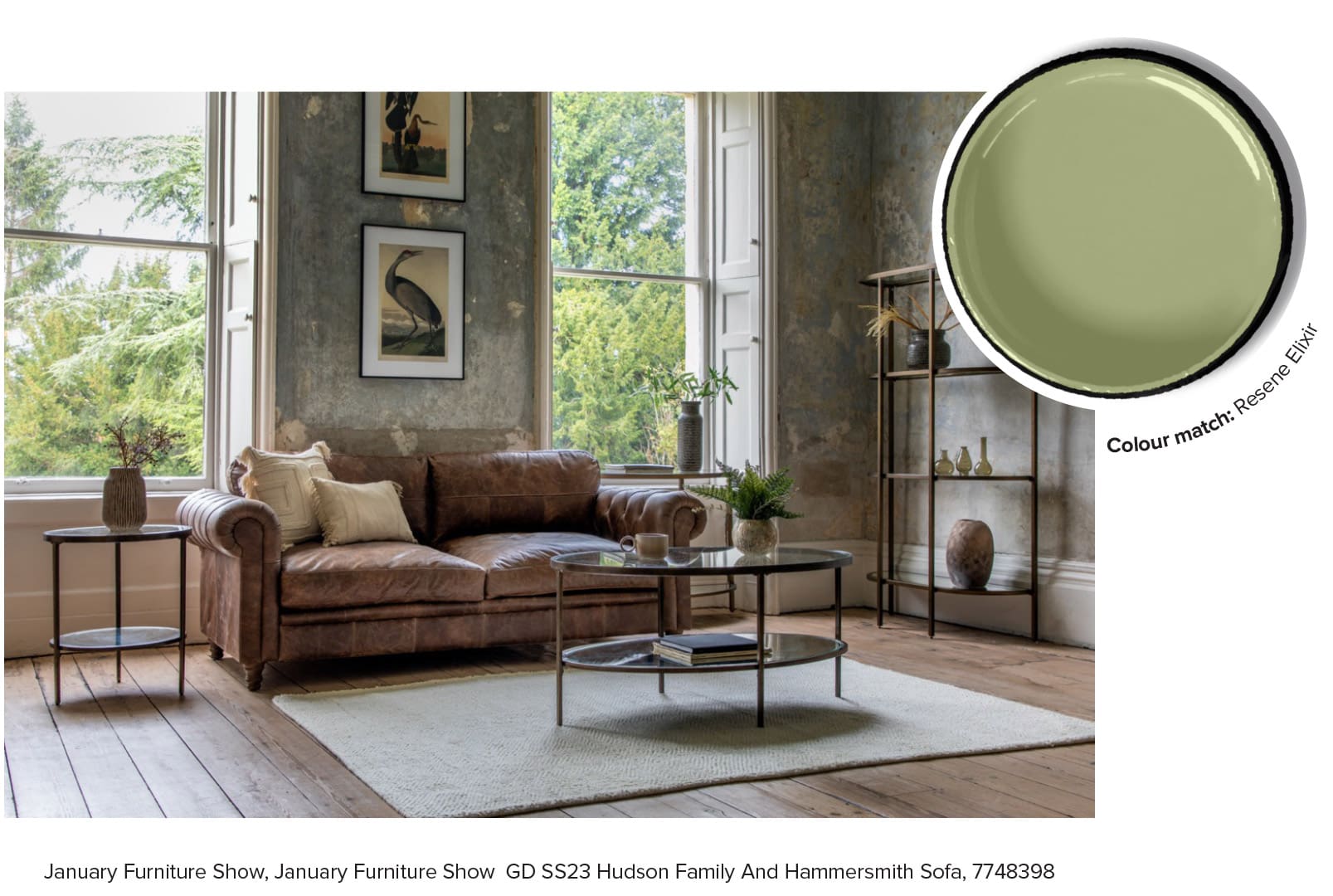
Sometimes, imperfections make for the best design. The aged, textured walls contrast beautifully with the rich brown leather sofa, creating a look that feels effortlessly lived-in yet stylish. A nice balance of rustic and refined.
The Chesterfield-inspired design of the sofa keeps things classic, but the relaxed seat cushions make it more inviting than traditional buttoned-up versions. This is a great option if you love the character of antique furniture but want the comfort of contemporary pieces. The warm, worn-in leather also pairs well with the soft neutral tones of the rug and cushions, keeping the room from feeling too dark or heavy.
The glass and metal coffee tables bring a modern contrast to the space, proving that mixing materials is key to keeping a room from feeling stuck in one era. The shelving unit in the background adds to that industrial touch while still feeling cohesive with the organic tones of the wood floors and decor.
I’m Not Delicate, I’m Complicated

This space is a lesson in how to do soft and sophisticated without tipping into overly delicate. The mix of neutral and blush tones keeps things light and airy, while the mix of textures (velvet upholstery, sleek marble, and brushed metal) adds just enough contrast to make it feel intentional rather than one-note.
The sofa is a great example of how shape can dictate the overall vibe of a room. Its gently curved back and slim, tapered legs give it a refined, mid-century feel without looking too vintage. It’s a piece that works equally well in a minimalist setting or a more classic space, depending on how you style it.
If you’re thinking of going for a similar look, focus on a balance of shapes and finishes. Soft curves mixed with angular details, matte textures with glossy ones—it’s all about creating subtle contrast that keeps the space feeling dynamic. And don’t be afraid to bring in a bit of blush—it’s neutral enough to work in almost any setting but adds just enough warmth to keep things from feeling too cool or impersonal.
The Power of Velvet

This space is a great example of how minimalism can feel warm and inviting rather than stark or cold. The Charla Sofa has a structured yet soft presence, setting a refined tone for the room. Instead of relying on just neutrals, the mustard velvet chair brings in a rich contrast, proving that even a single bold piece can transform a space. A good way to make a neutral palette more dynamic is to layer different shades and materials rather than sticking to just one tone—this keeps everything from feeling too flat.
The coffee table is a clever mix of materials, blending wood, brass, and black lacquer to create something sculptural without being overpowering. This is a great example of how mixing textures can add depth in a minimalist space without introducing visual clutter. When the color palette is restrained, material contrast becomes even more important.
Lighting plays a big role here too. The floor lamp isn’t just practical—it’s a design statement. The arrangement of spherical glass lights adds an artistic touch, reinforcing the modern aesthetic while keeping things soft and balanced. Choosing lighting that acts as a focal point rather than just an afterthought is a great way to elevate a room’s overall look.
If you’re into this kind of style, focus on mixing textures and materials like leather, velvet, wood, and metal to create layers of interest. Use lighting as more than just function. let it become part of the design. Keep the color palette tight but introduce contrast through materials and a few standout pieces, like a bold chair or sculptural table. Minimalism isn’t about having less; it’s about making sure every element has a purpose. When done right, it feels effortless, refined, and full of personality.
It’s Ok to Slouch
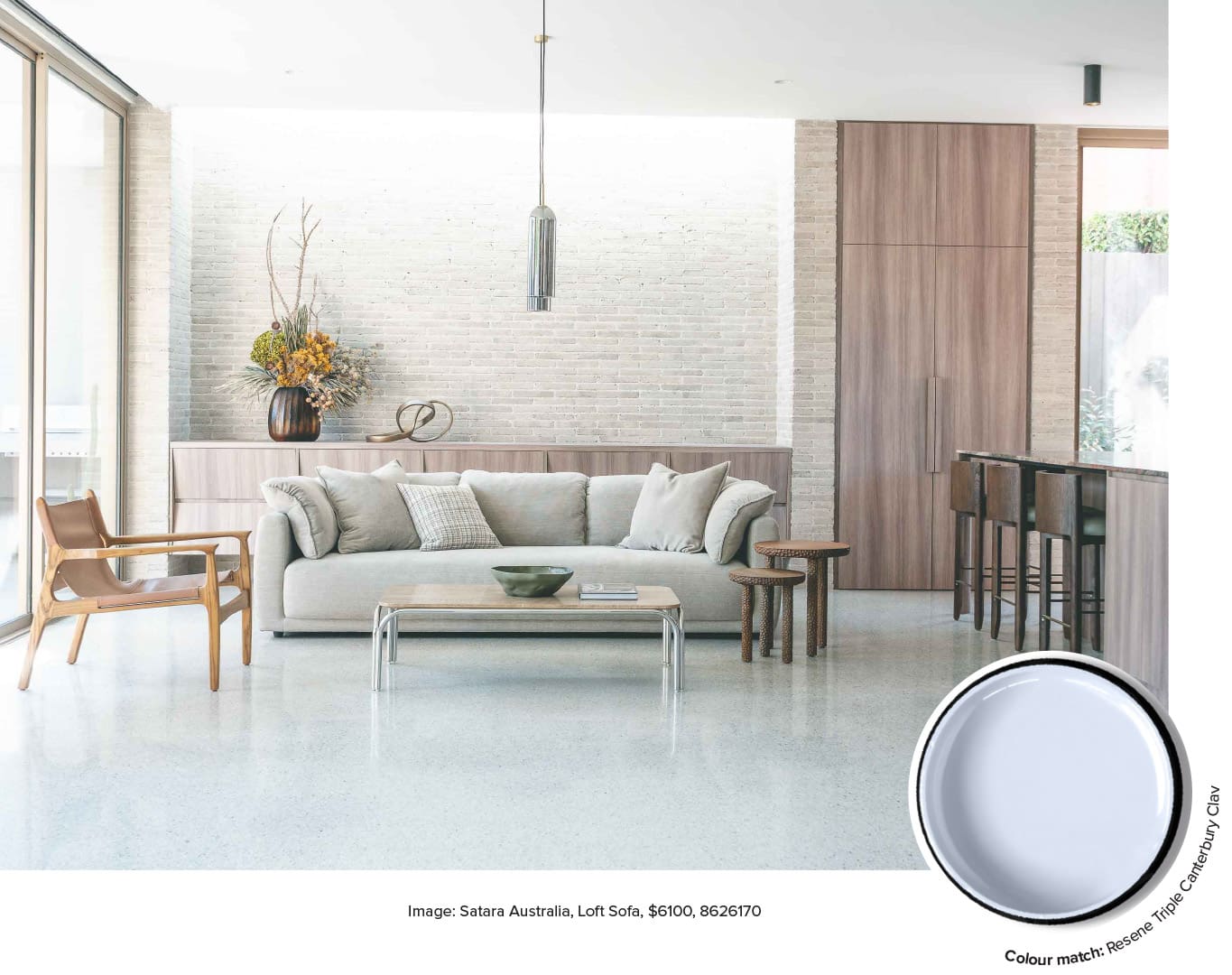
This space is a great example of how to do warm minimalism the right way. The Loft Sofa sits effortlessly in the room, with its soft, slouched arm cushions giving it a casual, inviting feel. It’s the kind of sofa that looks structured enough for a polished interior but still relaxed enough to sink into at the end of the day. The light neutral upholstery blends seamlessly with the soft textures in the room, while the high-density foam ensures that comfort doesn’t take a back seat to aesthetics.
Everything here is about balance. The light terrazzo flooring and soft linen sofa are contrasted by the warmth of the wooden cabinetry, leather accent chair, and natural woven side tables. The trick to making a neutral space feel dynamic is in the textures. When colors are kept soft and muted, combining different materials prevents the space from looking one-dimensional.
If you want to achieve a similar look, focus on quality over quantity. Keep the palette light, but make sure to mix up textures with wood, woven materials, and soft upholstery. Choose lighting that enhances the warmth of the space rather than overpowering it.

